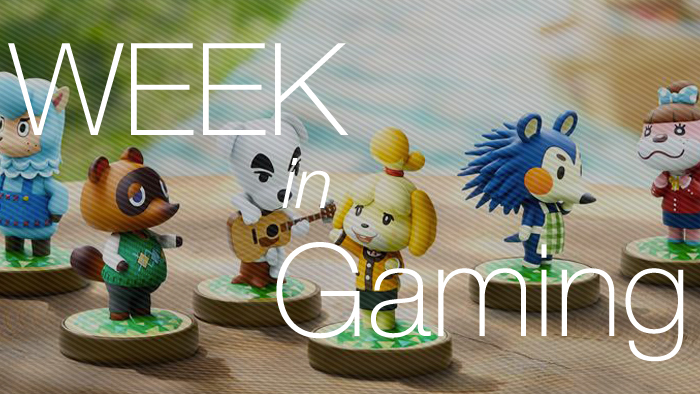
Remember childhood? That time when you were more likely to get a grazed knee than RSI? When having a Caprisun and a Lunchables box was something you could do without everyone thinking you were making an ironic lunchtime statement? Long before you'd ever even heard the words "Excel" and "toner" and were more likely to be found prancing around the playground shouting "I'm a unicorn!" than getting those copies of the Johnson files for your boss?
Good times, eh? But those times are over. Look at yourselves in the mirror and weep salty tears into your crow's feet and your laughter lines. We will never be young again. Luckily for us all, though, we do have one thing the snotty youths don't: disposable income.
Toys-to-life is the new thing as far as video games are concerned, with Lego Dimensions, Skylanders, Disney Infinity and now Nintendo all cashing in on the lucrative game add-on. It's the future we always dreamed of: our toys are real! After growing up watching Transformers, Power Rangers and Toy Story, and even that one creepy bit in A Little Princess when the dad tells his daughter that her dolls are totally alive and move around when she's not looking, we can finally live the reality that TV and film made us believe in as a child. Problem is, we're all adults now.
But of course, the makers of toys-to-life products know that. Nintendo prices its Amiibos rather high and makes some of them "rare" simply by just, well, not making enough of them; Skylanders and Disney Infinity play off the fact that many of those nostalgic toy-craving people are now parents, and thus have to buy these toys for their kids (right? WINK). Meanwhile Lego Dimensions combines beloved franchises like Scooby Doo, Doctor Who, DC Comics and Back To The Future to sucker in a generation that grew up in the 80s and 90s.
The long con
You see? They're not for kids at all. It's almost as if the entirety of the 90s - a decade dedicated to the promise of technology, even if that promise was occasionally a little bit overenthusiastic (where's my goddamn Power Glove?) - was some kind of long-con-style seeding to get us to crave toys with little chips inside them that held a load of tasty game data.
Is it exploitation, then, to exchange nostalgia for tasty currency? Obviously there's a fair bit of dodgy dealing going on, which becomes apparent the second you type "amiibo" into the eBay search bar and find out just how far people will go to get their mitts on a Marth. Nintendo has been a bit cheeky in creating its false "rarities", and the adults snatching up Gold Mario from under a weeping child's nose are possibly taking their collector's habit a little too far, but I just can't bring myself to hate the movement completely.
After all, I'm one of those nostalgia kids. I've heard it said that the 80s and 90s produced what might well be the most nostalgic generation ever, due to the rapid improvement in technology in such a short space of time, giving the two decades the impression of being much, much longer than they were.
Sign up for breaking news, reviews, opinion, top tech deals, and more.
Maybe the problem with adults buying toys-to-life is that it seems gross and expensive and silly until it's a franchise you care about. I don't care for Mario and his stunted mushroom friends all that much, so amiibo barely registered for me. But Lego, on the other hand, gets me more excited than… well, than a kid on Christmas day unwrapping a load of Lego. I will buy so many of those sets, and I will join my amiibo-loving friends in that lovely place called Credit Card Debt, and just like that, I will be on the other side of the fence.
Luckily, I've got a couple of months left before all the Lego comes out. Pray for me.